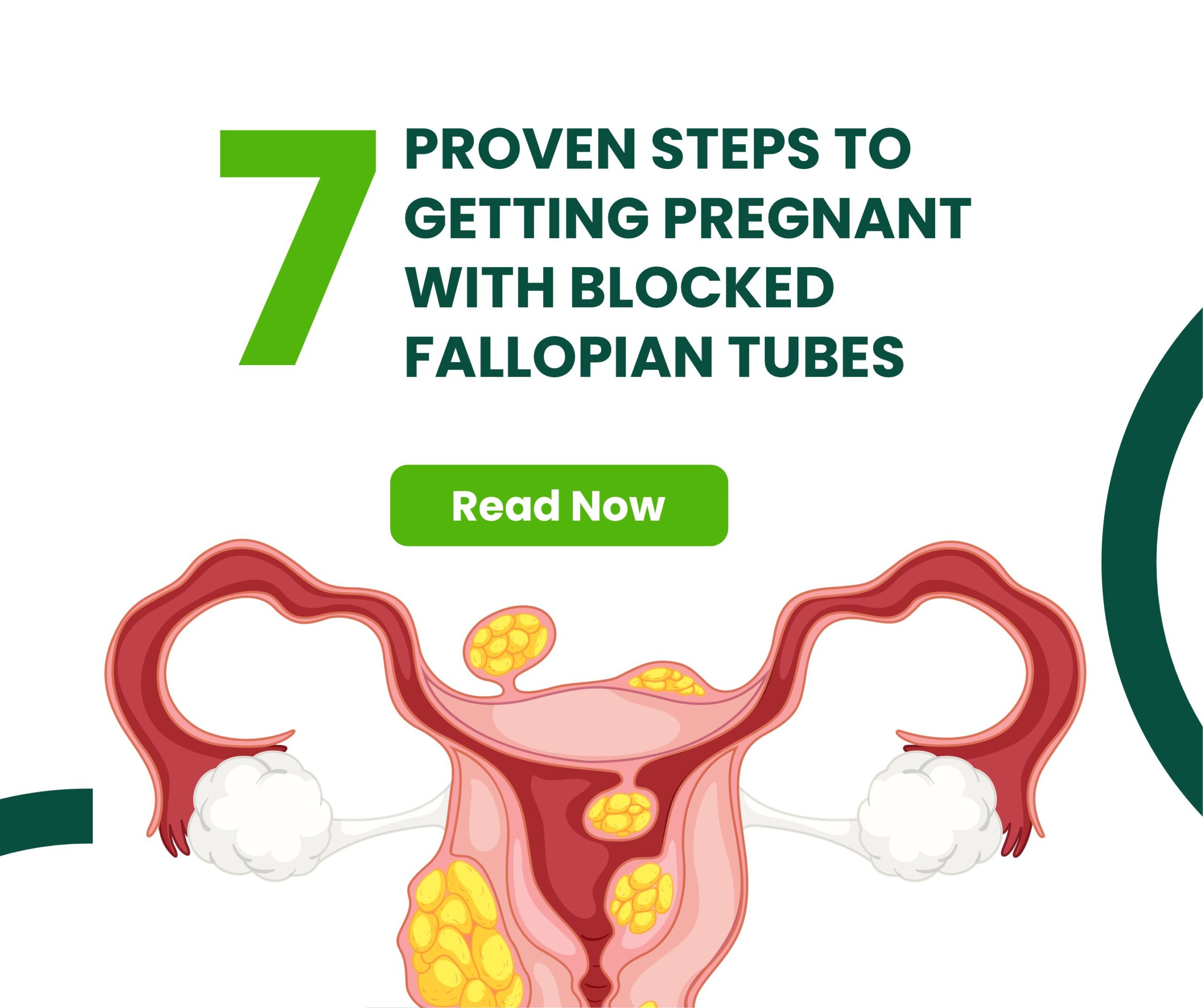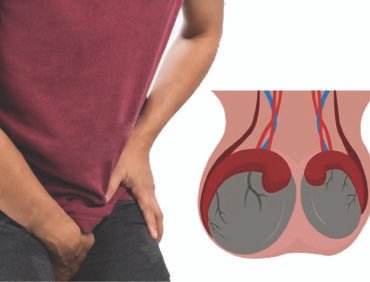
Struggling with blocked fallopian tubes can feel like an emotional rollercoaster. If you’ve been trying to get pregnant and dealing with the frustration of blocked tubes, you’re not alone. It is estimated that over 50% of women experiencing infertility in Nigeria have blocked fallopian tubes. However, the good news is, there is hope. Achieving pregnancy with blocked fallopian tubes is possible—whether through natural methods, medical interventions, or a combination of both.
In this guide, we’ll walk you through seven proven steps to getting pregnant with blocked fallopian tubes, including how to open blocked fallopian tubes, understand the signs and symptoms of blocked fallopian tubes, and explore both natural and medical solutions.
Let’s dive into the steps you can take to increase your chances of pregnancy.
How do Blocked Fallopian Tubes affect pregnancy?
The fallopian tubes play a crucial role in conception, serving as the pathway for eggs to travel from the ovaries to the uterus. During ovulation, an egg moves through the tube, where fertilization may occur before implanting in the uterus.
However, if one or both tubes are blocked, sperm may not reach the egg, or a fertilized egg may be unable to travel to the uterus, leading to infertility. As one of the most common causes of infertility, addressing fallopian tube blockages is essential for those trying to conceive.
Can you Possibly get Pregnant with One Blocked Fallopian Tube?
Yes, you can still get pregnant if even you have one fallopian tube
Some women are born with only one fallopian tube, while others may have lost one due to surgery for infections, cysts, or an ectopic pregnancy. As long as:
- You have at least one healthy ovary
- You ovulate regularly (monthly periods)
- Your remaining fallopian tube is open and functioning
…then you still have a chance to conceive naturally!
However, if a tube is blocked due to infection, disease, or inflammation, there’s a risk the other one might also be affected. That’s why a healthy, open fallopian tube is key to getting pregnant. If you’re unsure, talk to a specialist to explore your options.
Signs of Blocked Fallopian Tubes
If you’re wondering whether you have blocked fallopian tubes, it’s important to recognize the common blocked fallopian tube symptoms. Sometimes, blocked fallopian tubes can occur without obvious symptoms, making it difficult to identify. However, many women experience one or more of the following symptoms:
Infertility: this is the most common symptom of blocked fallopian tubes. If you have been trying to conceive for a year or more without success, blocked fallopian tubes could be the underlying issue.
Pelvic Pain: You may also experience mild to severe pelvic pain, especially during your menstrual cycle. This can be a sign of internal scarring or infections causing blockages.
Irregular Periods: Women with blocked tubes may also experience irregular periods or pain associated with ovulation.
Abdominal Discomfort: Persistent or occasional abdominal discomfort can also signal the presence of blocked tubes.
The symptoms of blocked fallopian tubes can be subtle, so if you suspect a blockage, it’s essential to consult a fertility expert for a proper diagnosis.
How to Open Blocked Fallopian Tubes Naturally
Many women ask, “Can you open blocked fallopian tubes naturally?” The answer is yes—there are lifestyle changes and holistic treatments that can support your fertility and potentially help clear the blockages. While these natural remedies might not work for everyone, they can improve your chances of conception, especially when combined with medical interventions.
Medical Options to Open Blocked Tubes
When natural remedies aren’t enough, medical interventions may be necessary to open blocked fallopian tubes and restore fertility. If you have block tubes or know you have blocked fallopian tubes, these medical options can be life-changing.
1. Tubal Cannulation
Tubal cannulation is a minimally invasive procedure used to clear blockages in the fallopian tubes. It involves inserting a thin, flexible catheter (cannula) through the tube to create an opening and restore passage.
This is typically performed using hysteroscopy or laparoscopy—procedures that utilize a narrow tube with a camera and light, inserted through the cervix or a small abdominal incision for precise guidance. To confirm success, a dye is passed through the uterus; if it flows freely through the tubes, the blockage has been cleared.
According to research from Saint Mary’s Hospital in the UK, tubal cannulation has a success rate of 22% to 33% for pregnancy, with 75% of cases achieving successful tube reopening. However, the procedure is not always permanent, as the tubes may reclose over time.
2. Salpingostomy
Salpingostomy, is used when blockages are caused by scar tissue or infections. This procedure involves creating an opening in the fallopian tube to remove obstructions and improve the chances of conception. While both methods can enhance fertility, their effectiveness depends on the severity and location of the blockage.
3. In Vitro Fertilization (IVF)
IVF is a process bypasses the fallopian tubes entirely. Eggs are retrieved directly from the ovaries, fertilized in a laboratory, and the embryo is then transferred into the uterus. IVF has helped countless women conceive even when blocked fallopian tubes are present. However, it is not without its risks.
These medical options should be discussed with a fertility specialist who can guide you through the best course of action based on your individual condition.
7 Proven Steps to Getting Pregnant with Blocked Fallopian Tubes
Now that we’ve covered the basics, let’s dive into the seven proven steps to getting pregnant with blocked fallopian tubes.
1. Get the Right Diagnosis
The first step in your fertility journey is to get an accurate diagnosis. Consult a fertility expert to undergo diagnostic tests like hysterosalpingography (HSG) or sonohysterography, which can help confirm the presence of blocked fallopian tubes. It’s essential to understand the cause of the blockage to determine the best course of treatment.
2. Understand the Root Cause
Blocked fallopian tubes can be caused by infections like STIs or pelvic inflammatory disease, scar tissue from surgery, or conditions like endometriosis. Some women are even born with blocked tubes, suggesting a genetic link. Identifying the cause is key to finding the right treatment and improving fertility.
3. Embrace Natural Remedies
If you’re looking to explore natural solutions, adopting a holistic approach can help. Incorporating herbal supplements, acupuncture, and fertility-boosting foods into your routine can improve reproductive health and open the fallopian tubes.
4. Let your partner do a health-check
While preparing your body for conception, it’s equally important for your partner to undergo a health check. A visit to a healthcare provider can help identify any potential fertility issues that may be affecting your chances of conceiving. Taking this step together ensures a more effective and holistic approach to your fertility journey. To know how you can help your partner if he has infertility challenges, Check out natural remedy to overcome male infertility challenges.
5. Time Your Ovulation Right
Tracking your ovulation cycle is crucial for increasing your chances of pregnancy. Use ovulation predictor kits or monitor your basal body temperature to pinpoint your fertile window. Timing intercourse correctly can maximize your chances of conception, especially if you are undergoing treatments like IVF.
6. Fertility-Boosting Nutrition
Eating a balanced diet rich in antioxidants, vitamins, and minerals is essential for optimal fertility. Foods like leafy greens, berries, and whole grains provide the nutrients necessary for reproductive health. Incorporate foods high in folate, vitamin C, and zinc into your diet to support fertility.
7. Partner with a Fertility Expert
Consulting with a fertility expert can help you develop a personalized treatment plan tailored to your needs. Whether it’s advice on lifestyle changes, natural supplements, or medical treatments, a fertility expert can guide you through your options and help you make informed decisions.
Your Path to Pregnancy Starts Today
If you’re dealing with blocked fallopian tubes, it’s understandable to feel frustrated and uncertain. However, with the right steps, many women successfully get pregnant despite this condition. From natural remedies to advanced medical treatments, the journey to parenthood can still be within reach.
Start today by exploring the seven proven steps to getting pregnant with blocked fallopian tubes. Remember, you are not alone in this, and help is available. Take charge of your fertility and begin your journey with confidence.
If you’re over 35, seeking support sooner rather than later can make all the difference. Fertility naturally declines with age. So it is necessary to consult a specialist early enough to increase your chances of success with treatment.
Plan B Wellness is Here to Treat Blocked Fallopian Tubes
If you’re looking for proven ways to unblock your fallopian tubes and restore your fertility, we’re here to guide you. Reach out to us through any of our contact details below or leave a comment sharing your case. We’re ready to walk this journey with you.
If you would like to explore the fertility solution we offer for blocked fallopian tubes at Plan B Wellness, click here.
To discover our full range of fertility solutions, click here.
If this article helped you, please share it—it could be the life-changing information someone else needs.
Start your journey today. We’re here to support you every step of the way.







